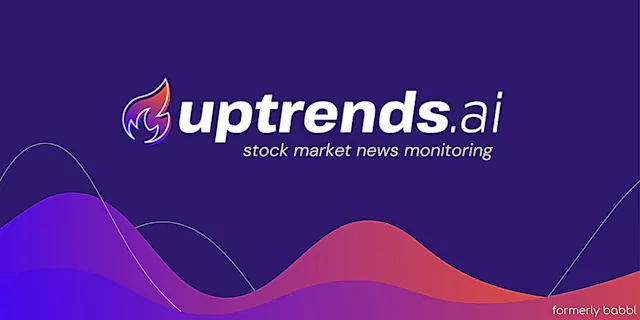20 Great Ideas For Choosing AI Stock Trading Sites
20 Great Ideas For Choosing AI Stock Trading Sites
Blog Article
Top 10 Ways To Evaluate The Security And Security Of Ai Trading Platforms
Privacy and security are the top priorities when making use of AI stock predicting/analyzing trading platforms because they typically handle sensitive financial as well as personal data. A breach of data or its misuse could result in financial loss as well as reputational harm. Here are 10 suggestions to evaluate the security and privacy of these websites.
1. Assess Data Encryption
Secure transmission of data: Make sure that the platform you are using uses secure protocols to secure your data when it travels between their servers and the device (e.g. TLS/SSL).
Secure transport of data Verify that the sensitive data being stored on a server has been encrypted with strong encryption standards, like AES-256.
Make sure the platform supports encryption end-to-end of sensitive information or communications.
2. Assess Authentication Measures
Two-factor verification (copyright) Make sure that the platform is compatible with copyright for an added security layer.
Biometric authentication - Check to see if there are biometric options for mobile app login (e.g. finger fingerprint, facial recognition).
Password policies: Check whether the platform follows strict policies regarding passwords (e.g. minimum length or complexity requirements).
3. Check for Regulatory Compliance
Financial regulations: Make sure the platform complies with relevant financial laws (e.g., SEC, FINRA, MiFID II).
Data protection laws: Verify your compliance with privacy laws (e.g. GDPR, CCPA), if you're in or doing business with regions that are subject to these laws.
Audit certifications. Verify that the platform you're looking at has been through third-party assessments of security or certifications.
Review Controls for Accessing Data
Role-based Access: Ensure that the platform is using control based on role (RBAC) in order to restrict access to data only to only authorized users.
Check if you're able to establish different levels of access for users or teams.
Activity monitoring: Find out whether the platform records and monitors user activities for suspicious behavior.
5. Assess Vulnerability Management
Regular updates Regular updates: Update the software to ensure it's always current.
Penetration testing : Check to find out if your platform is subjected to regular penetration tests to identify and rectify security flaws.
Bug bounty programs: Check whether your platform offers programs that reward external security experts for identifying security issues.
6. Evaluate Data Privacy Policies
Transparency Read the privacy policy to see how your data are collected and used or shared.
Data minimization: Make sure your platform only collects data that is necessary for its operation.
Third-party sharing : Review the platform's data sharing policies and conditions.
7. Make sure you are using a Secure API Utilization
API security. Ensure APIs use secure authentication methods (e.g. OAuth keys, API keys) and that the data is encrypted.
Limiting the rate. Check the API's rate limitation to avoid abuse.
Find out if the platform records API access for monitoring and auditing, as well as reporting.
8. Assess Incident Response & Recovery
Incident response plan: Ensure the platform has a clear plan for responding to incidents such as security or data breaches.
Notification policies: Determine if users are informed promptly in case of a security incident.
Data backups: Check that the platform is backed up with its data on a regular basis and has an emergency recovery plan.
9. Examine the security measures for physical security
Data center security Security of servers: Ensure that the servers on your platform are located in data centers that are equipped with physical security measures, like security and access controls.
Redundancy: Check if there are redundant platforms on the platform to ensure that data is available in the event of hardware failure.
Geographic distribution: Determine if data is spread across several geographic locations for added security.
10. Test the privacy controls of your users
Data deletion. You must erase all data permanently from the service when you stop utilizing the service.
Privacy settings: See if you have privacy settings that permit you to control the data shared and visible.
Anonymization: Determine whether the platform is able to anonymize data used to analyze or machine learning.
Bonus Tips
Feedback and reviews from users Review and feedback from users to determine the platform's reputation for security and privacy.
Trial period - Use the trial or demo version of the platform to try out its security features and privacy controls.
Customer Support: Make sure that the platform offers a solid support for issues or concerns related to security.
You can assess the security, privacy, as well as the accuracy of AI stock trading platforms by following these tips. This will ensure that your financial information as well as personal data are safe. A secure platform protects your investments and creates trust in its services. See the most popular ai investment stock for website recommendations including artificial intelligence stocks, ai trade, best stocks to invest in, ai investing tools, ai for copyright trading, best ai stocks to buy now, invest in ai stocks, artificial intelligence stocks, ai stock trader, best stocks to invest in and more.
Top 10 Ways To Evaluate The Ability To Scale Ai Stock Predicting/Analyzing Trading Platforms
To ensure that AI-driven trading platforms and prediction systems can handle the increasing amount of user input, data and market complexity, it is vital to determine their capacity. These are the top 10 tips to assess the scalability of AI-driven stock prediction and trading platforms.
1. Evaluate Data Handling Capacity
Tips: Determine whether the platform has the capability to analyze and process huge databases.
Why? Scalable systems have to handle data volumes that are increasing with no performance loss.
2. Test the Real-Time Processing Capabilities
Tip: Assess how well the platform can process live data streams, like live stock prices or breaking news.
What is the reason? Analyzing in real-time is crucial in trading decisions, and delays can lead to missed opportunities.
3. Cloud Infrastructure and Elasticity
Tips: Determine if the platform can dynamically scale resources and uses cloud infrastructure (e.g. AWS Cloud, Google Cloud, Azure).
Cloud platforms provide elasticity, allowing the system to scale up or down based on demand.
4. Algorithm Efficiency
Tip 1: Examine the computational efficiency for the AI models that are being utilized (e.g. reinforcement learning deep learning, etc.).
The reason is that complex algorithms require a lot of resources. Therefore optimizing them can help you scale.
5. Examine the parallel Processing and Distributed Computing
Check to see if your platform supports the concept of distributed computing or parallel processing (e.g. Apache Spark, Hadoop).
Why? These technologies can accelerate data processing across multiple nodes.
Examine API Integration and Interoperability
Tips Check the platform's capability to connect with APIs from outside (e.g. market data providers, brokerage APIs).
Why? Seamless integration allows the platform to be adapted to the changing environment of trading and data sources.
7. Analyze User Load Handling
Use a high-traffic simulation to check how the platform reacts under pressure.
Why: A platform that is scalable must be able to maintain its performance as the number of users increases.
8. Assess the model of Retraining and its Adaptability
Tips Check how often the AI models can be taught with new data.
Why: As markets change and models are updated, they must be updated rapidly to remain exact.
9. Verify that Fault-Tolerance and Redundancy are in place.
Tip. Make sure your platform has failover mechanisms and redundancy to handle hardware or software malfunctions.
The reason: Trading can be expensive Therefore fault tolerance and scalability are crucial.
10. Monitor Cost Efficiency
Tips: Calculate the cost of scaling your platform. Consider cloud resources, data storage and computational power.
The reason is that it should be at a price that is affordable. This means that you must balance performance against expense.
Bonus tip: Future-proofing
Be sure that the platform incorporates new technology (e.g. quantum computing, advanced NLP) and is able to adjust to regulatory changes.
If you concentrate your focus on these aspects, you can accurately assess the scale of AI prediction and trading platforms. This guarantees that they are robust and effective, and prepared for growth. Have a look at the top more help on investing in ai stocks for more examples including best ai trading app, ai copyright signals, ai investing tools, copyright ai bot, incite ai, chart ai trading, ai stock prediction, artificial intelligence stocks, stock predictor, ai investing tools and more.